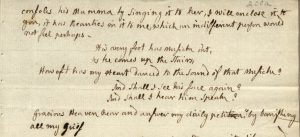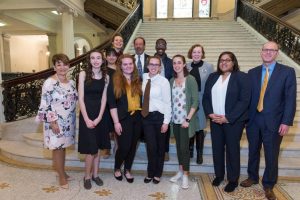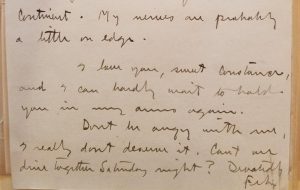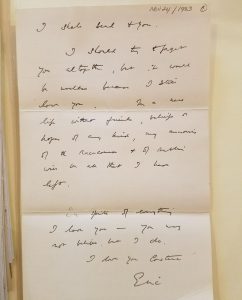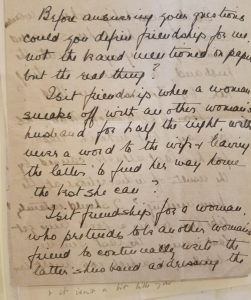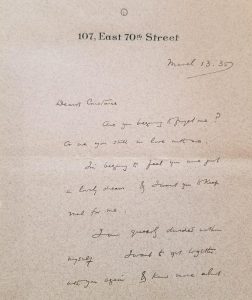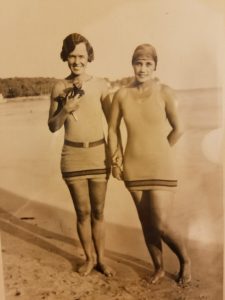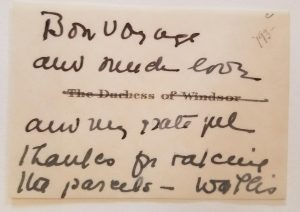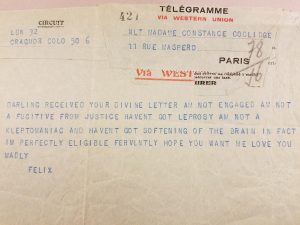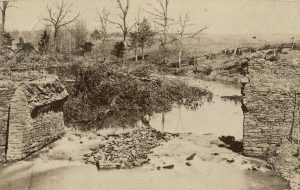By Gavin Kleespies, Director of Programs, Exhibitions and Community Partnerships
The MHS offers a variety of creative and original programs throughout the year. Here is a look back at some of the original programs we hosted in the winter and spring as well as an overview of a few programs that are coming up this summer. Stay tuned for more information about a series we are planning for fall 2019 that explores the history of subsidized housing in Boston.
This winter, we partnered with the Old South Meeting House to host a three part series on the history of the Great Molasses Flood. These discussions commemorated the 100th anniversary of the disaster and addressed the critical social themes raised and the aftermath. Many who know of the Flood perceive the events as almost tragi-comedy or as an anomalous catastrophe outside the bounds of historical contextualization. In fact, the Flood, and the trials that followed, bring up many questions as to how we frame or mythologize historical events, the responsibilities of businesses and government oversight, and the rights and status of immigrant communities. Our panelists included local scholars and activists along with Stephen Puleo, the author of the seminal book on the Molasses Flood titled, Dark Tide as well as many other books on Boston area history. Hundreds of people attended these talks where they had the chance to engage in thoughtful dialogue, share their stories or insights, and pose questions to the panelists.

In February, we hosted a program with Prof. Julian E. Zelizer, Princeton University; Michael Tomasky, editor of Democracy; and radio personality Robin Young, WBUR and NPR, to discuss how political polarization has led our country to a state of almost complete dysfunction. The conversation was steered by Robin Young giving Zelizer and Tomasky the chance to reflect on past political strife as well as modern day gerrymandering and conflicts within parties which force both sides towards the extremes. The conversation that ensued was a great example of using history to explain current events.
In May, the panel discussion Boston Women Designers: Then and Now offered a creative and original look at how gender norms have been changing in the field of design in Boston. MHS President Catherine Allgor began the program with a historical note about women designers in Boston. The discussion that followed explored how the field has changed and what walls still need to come down. We partnered with the Fenway Alliance and the Boston Preservation Alliance to produce the show, which helped us reach new audiences and sparked a lively set of questions at the end.

On Saturday, 1 June, the official historian of the Boston Red Sox, Gordon Edes, will join panelists Leigh Montville, Jane Leavy, and John Thorn, the official historian of Major League Baseball, in a discussion to mark 100 years since the sale of Babe Ruth to the Yankees. For many, this infamous sale was the catalyst of a nearly century long losing streak and still stokes a rivalry between the New York and Boston teams. At the time, Red Sox owner, Henry Frazee, justified the move stating: “With this money the Boston club can now go into the market and buy other players and have a stronger and better team in all respects than we would have if Ruth had remained with us.”[1] In fact, it was widely speculated that the princely sum paid for Ruth ultimately financed Frazee’s ventures as a Broadway producer and was never used to replenish Red Sox talent. Regardless, the deal left Boston fans to look on with irony, superstition, or just plain frustration as the Red Sox failed to bring a World Series pennant home to Boston for another 86 years.
The Sale of the Century panel is just one of the exciting original public programs offered by the MHS this summer. In July, we will host a series of talks on the early China trade in Massachusetts, drawing on the expertise of local scholars and curators who will examine the ways in which the China trade helped shape the global profile of the Bay State. This series of programs is especially important to the MHS community because of its strong ties to our collection. In 1984, the China Trade Museum of Milton converted to the Forbes House Museum. In the process, it gave the bulk of its manuscript collection to the MHS. Art and objects headed to the Peabody Essex Museum. For the first panel talk in the series, Layla Bermeo, Assistant Curator of Paintings at the MFA; Karina Corrigan, Curator of Asian Export Art at PEM; and Peter Drummey, the Stephen T. Riley Librarian at the MHS, will take a closer look at the art inspired by the trading period along with intersections between these prominent collections.
Click on the links below for more information about these programs. And visit our online calendar for a look at everything we have planned in the coming months.
Sale of the Century: How the Red Sox Peddled Babe Ruth to the Yankees
The Legacy of the China Trade in Massachusetts: Art, Artifacts, & Manuscripts in Local Collections
The Legacy of the China Trade in Massachusetts: The Emergence of a Global Boston
The Legacy of the China Trade in Massachusetts: Families, Fortunes, & Foreign Luxuries
[1] O’Leary, James C. “Red Sox sell Babe Ruth for $100,000 cash.” Boston Globe. 6 January 1920: bostonglobe.com. Web. 29 May 2019


